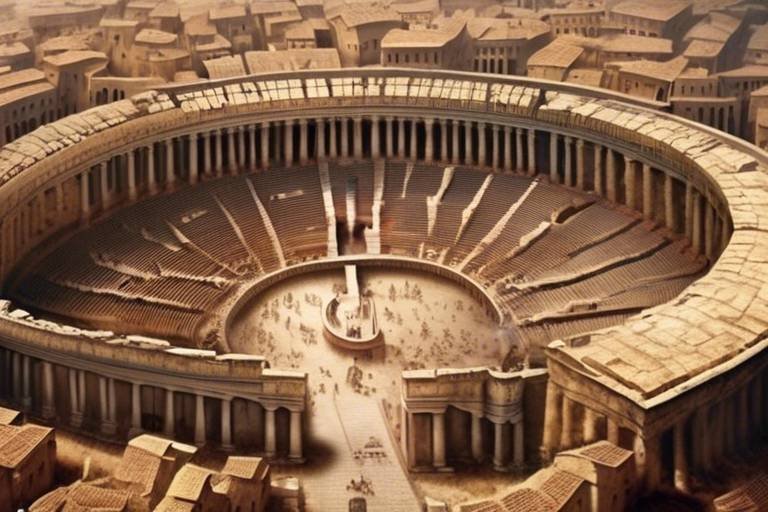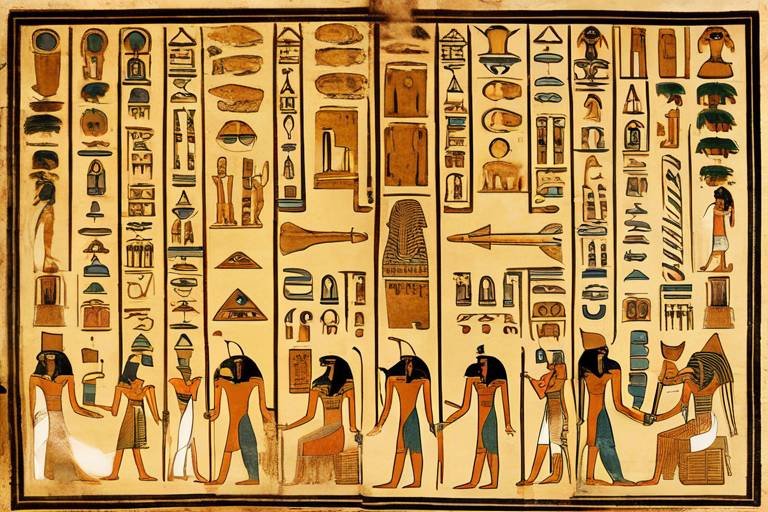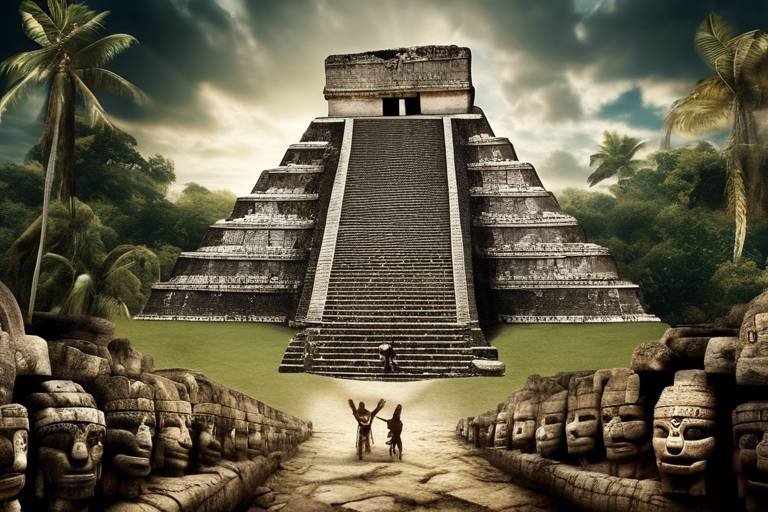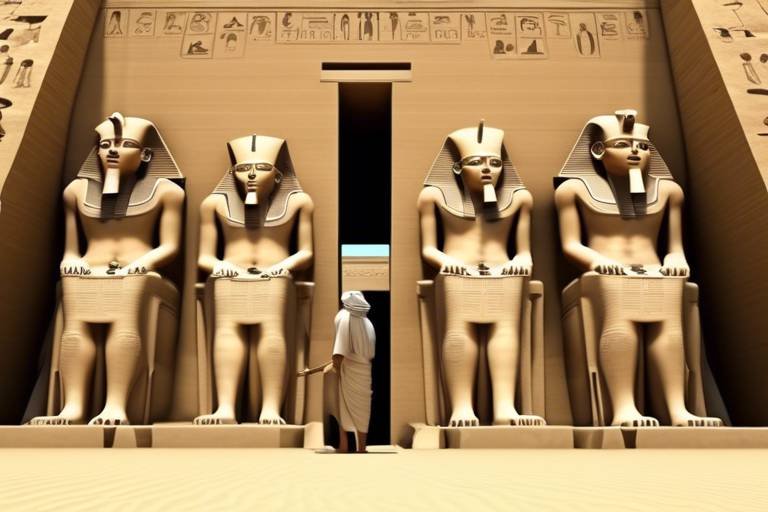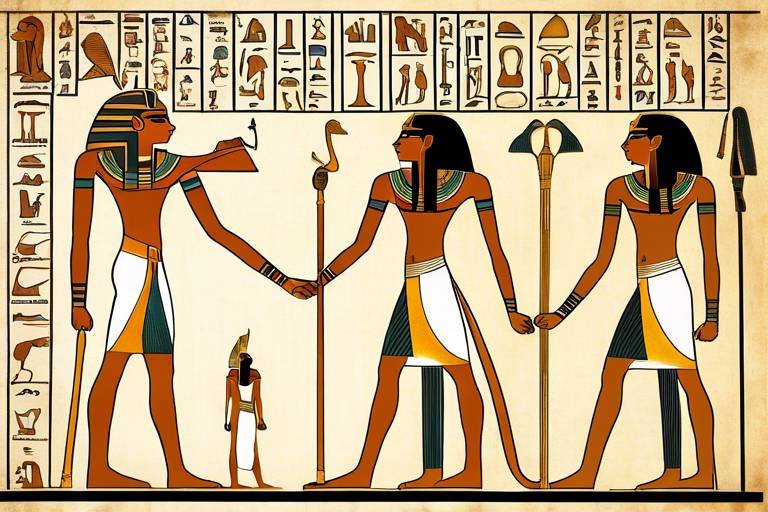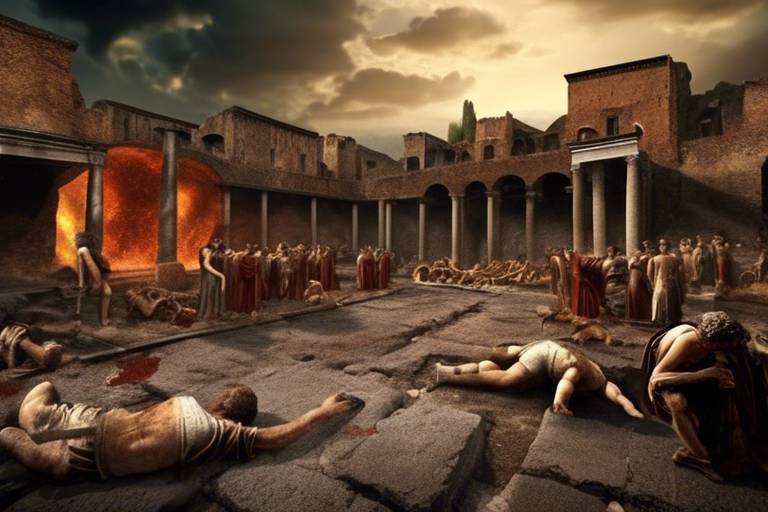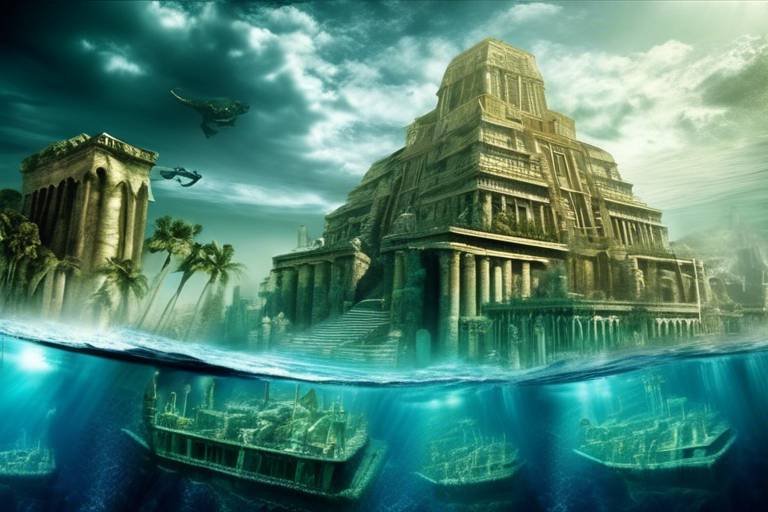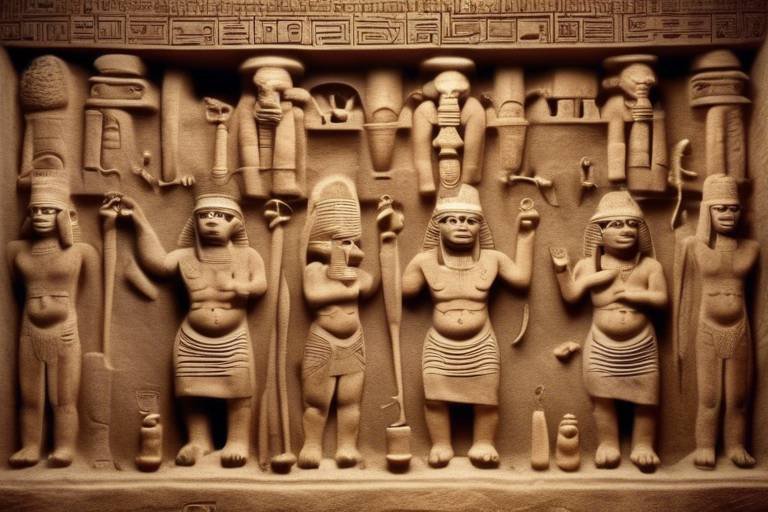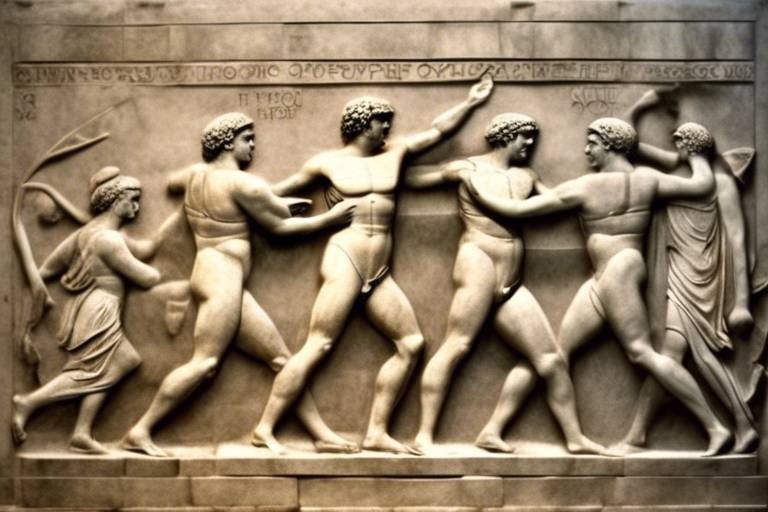The Mystery of the Ancient Roman Empire's Expansion
The ancient Roman Empire's expansion is a captivating enigma that continues to intrigue historians and enthusiasts alike. The empire's remarkable growth and dominance over vast territories have sparked debates and discussions for centuries. What drove the Romans to expand their borders so aggressively? How did they overcome geographical obstacles and military challenges to establish one of the most powerful empires in history?
Geographical factors played a crucial role in shaping the trajectory of the Roman Empire's expansion. The presence of natural barriers such as mountains, rivers, and coastlines both facilitated and hindered their conquests. While mountains provided strategic defense points, rivers served as vital transportation routes for military campaigns. The empire's access to coastlines enabled maritime trade and naval supremacy, further fueling their expansion across the Mediterranean.
When it came to military strategies, the Romans were unparalleled in their organization and tactics. From the disciplined legions to innovative siege warfare techniques, they employed a combination of brute force and strategic cunning to subdue their enemies. The Roman military machine was a well-oiled engine of conquest, relentlessly pushing the boundaries of the empire through calculated campaigns and decisive battles.
However, it wasn't just military prowess that drove the Roman expansion. Economic motivations also played a significant role in their quest for territorial growth. The empire's insatiable appetite for resources, wealth, and trade routes drove them to conquer new lands and exploit their riches. The acquisition of fertile lands, valuable minerals, and lucrative trade networks fueled the Roman economy and sustained their imperial ambitions.
Cultural assimilation was another key aspect of the Roman Empire's expansion. As they conquered new territories, the Romans assimilated and integrated diverse cultures into their own, creating a rich tapestry of traditions, beliefs, and practices. This cultural blending not only enriched the empire but also solidified its influence over conquered populations, fostering a sense of unity amidst diversity.
Political power play was also a driving force behind the Roman Empire's expansion. The thirst for power, prestige, and influence motivated emperors and officials to pursue territorial conquests and assert dominance over rival states. The expansion of the empire was not just about territorial gains but also about projecting political strength and securing strategic advantages in a competitive geopolitical landscape.
Despite their military might and political ambitions, the Roman Empire faced various forms of resistance and revolts from conquered peoples. From rebellions in distant provinces to uprisings within the heart of the empire, challenges to Roman rule were a constant threat. The empire's ability to quell revolts and maintain control over restive populations was a testament to their resilience and adaptability in the face of adversity.
The legacy of the Roman Empire's expansion continues to reverberate through modern societies and global history. The imprint of Roman culture, law, and governance can be seen in numerous aspects of contemporary life, from architecture and language to political institutions and legal systems. The empire's legacy serves as a reminder of the enduring impact of ancient civilizations on the development of human civilization.
Archaeological discoveries have shed light on the methods and extent of the Roman Empire's expansion, providing valuable insights into the scale and sophistication of their conquests. From monumental ruins to intricate artifacts, archaeological evidence continues to uncover the secrets of the empire's expansion and the lives of those who lived under Roman rule.
Historical debates among scholars and historians continue to explore the motives, methods, and consequences of the Roman Empire's expansion. The complex interplay of political, economic, cultural, and military factors has fueled ongoing discussions and interpretations of this pivotal period in history. By delving into these debates, we gain a deeper understanding of the forces that shaped the ancient world and continue to influence our own.
Geographical Factors
Geography played a crucial role in shaping the expansion of the mighty Roman Empire. The diverse landscape of the ancient world, characterized by mountains, rivers, and coastlines, presented both challenges and opportunities for the Romans as they sought to grow their dominion.
One of the key geographical factors that influenced the Roman Empire's expansion was the presence of natural barriers such as the Alps and the Rhine River. These formidable obstacles acted as protective boundaries, shielding the empire from external threats while also serving as strategic points for military defense.
Moreover, the vast network of rivers, including the Tiber and the Nile, facilitated communication and trade within the empire, allowing for the efficient movement of goods and troops. The access to navigable waterways gave the Romans a significant advantage in terms of transportation and logistics, enabling them to project power across vast distances.
Additionally, the presence of coastlines along the Mediterranean Sea provided the Romans with access to maritime trade routes, connecting them to distant lands and exotic resources. The control of key ports and harbors allowed the empire to expand its economic influence and establish lucrative trade networks with other civilizations.
Overall, the geographical features of the ancient world not only shaped the expansion of the Roman Empire but also influenced its military strategies, economic motivations, and cultural assimilation efforts. The interplay between mountains, rivers, and coastlines created a dynamic landscape that both challenged and empowered the Romans as they sought to build their vast imperial domain.
Military Strategies
The military strategies employed by the ancient Romans played a crucial role in their vast expansion across the known world. With a well-disciplined army and innovative tactics, the Romans were able to conquer and control vast territories, solidifying their power and influence.
One of the key military strategies of the Roman Empire was the use of legions, highly organized units consisting of well-trained soldiers. These legions were the backbone of Roman military power, allowing them to effectively engage in battles and campaigns.
Furthermore, the Romans were masters of siege warfare, utilizing advanced engineering techniques to lay siege to enemy fortifications and cities. Their ability to construct elaborate siege works and siege engines gave them a significant advantage in capturing enemy strongholds.
In addition to their prowess in direct combat, the Romans also excelled in logistics and supply chain management. Their efficient transportation of troops, supplies, and equipment enabled them to sustain prolonged military campaigns far from their home territory.
Moreover, the Romans were adept at adaptation and innovation in response to different foes and terrain. They would tailor their strategies and tactics to suit the specific circumstances of each military engagement, ensuring a higher chance of success.
Another critical aspect of Roman military strategies was their integration of auxiliary forces. By incorporating soldiers from conquered territories into their ranks, the Romans not only bolstered their numbers but also gained valuable insights into the military tactics of diverse cultures.
Overall, the military strategies of the ancient Romans were a combination of discipline, innovation, and adaptability, allowing them to establish one of the most formidable empires in history through conquest and expansion.
Economic Motivations
Have you ever wondered how the mighty Roman Empire managed to expand its territories far and wide, leaving a lasting impact on history? In this article, we will delve into the enigmatic factors that drove the ancient Romans to conquer new lands, shape diverse cultures, and leave behind a legacy that still resonates in modern societies.
When it comes to the economic motivations behind the Roman Empire's expansion, one cannot underestimate the pivotal role that access to resources and lucrative trade routes played in driving the Romans to conquer new territories. The Romans were shrewd in their pursuit of wealth and power, and expansion was often fueled by the desire to control valuable resources such as fertile lands, minerals, and precious metals.
Moreover, by expanding their dominion, the Romans could establish new trade routes and monopolize existing ones, further boosting their economic prosperity. The empire's vast network of roads and ports facilitated the movement of goods and fostered economic growth, solidifying Rome's status as a dominant economic force in the ancient world.
Additionally, the Roman Empire's expansion was also driven by the need to secure sources of revenue to sustain its vast military campaigns and infrastructure projects. Conquered territories not only provided economic benefits through taxation and tribute but also served as a means to fund the empire's ambitious expansionist agenda.
Furthermore, the Romans understood the strategic importance of controlling key economic hubs and commercial centers, which allowed them to exert influence over trade networks and amass wealth through commerce. By strategically expanding their territories, the Romans could tap into new markets, establish economic dominance, and solidify their position as a formidable economic powerhouse.
In essence, the economic motivations behind the Roman Empire's expansion were deeply intertwined with the pursuit of wealth, resources, and commercial dominance. The empire's relentless quest for economic prosperity drove its ambitious expansion efforts, shaping the course of history and leaving a lasting imprint on the world as we know it.
Stay tuned for answers to common questions about the mysterious and intriguing expansion of the ancient Roman Empire!
Cultural Assimilation
When it comes to the expansion of the Ancient Roman Empire, one cannot overlook the significant role of cultural assimilation. The Romans were not merely conquerors; they were adept at absorbing and integrating the cultures of the lands they conquered. It was a process akin to a delicate dance, where the Romans would introduce their language, laws, and customs while also adopting and adapting elements from the conquered societies.
This cultural assimilation was not just a one-way street. The conquered peoples also influenced Roman culture, leading to a rich tapestry of traditions, beliefs, and practices that shaped the diverse identity of the empire. Imagine it as a grand mosaic, with each conquered culture adding a unique piece to the overall picture of the Roman Empire.
Through this assimilation, the Romans were able to create a sense of unity among the diverse populations under their rule. They built roads, aqueducts, and cities that reflected a blend of Roman ingenuity and local craftsmanship. This fusion of cultures not only strengthened the empire but also laid the foundation for the spread of Roman influence far beyond the borders of their vast territories.
One fascinating aspect of cultural assimilation was the Roman policy of granting citizenship to certain conquered peoples. This gesture not only pacified potential sources of rebellion but also integrated these individuals into the fabric of Roman society. It was a strategic move that helped solidify Roman control while also enriching the empire with new perspectives and talents.
In essence, cultural assimilation was a double-edged sword for the Roman Empire. While it allowed for the consolidation of power and the creation of a unified identity, it also led to the dilution of some traditional Roman values. The empire became a melting pot of cultures, beliefs, and practices, creating a complex tapestry that continues to fascinate historians and archaeologists to this day.
Political Power Play
When it comes to the expansion of the Ancient Roman Empire, one cannot overlook the crucial role played by political maneuvering and power dynamics. The Romans were masters of political strategy, using diplomacy, alliances, and military might to solidify their control over vast territories. It was a game of power and influence, where emperors and generals vied for supremacy on the grand stage of the ancient world.
Imagine the Roman Empire as a giant chessboard, with each move carefully calculated to outmaneuver opponents and secure dominance. Emperors like Julius Caesar and Augustus wielded power with a firm hand, using both force and cunning to expand their territories and assert control over conquered lands. The political landscape of the time was fraught with intrigue and betrayal, where loyalty could shift in an instant, and alliances were made and broken with little regard for sentiment.
Within the Roman political arena, ambition and ruthlessness were prized qualities, and those who could outwit their rivals often rose to the highest echelons of power. The Senate, the political body of the Roman Republic and later the Empire, was a battleground of competing interests, where factions vied for control and influence over policies and decisions that shaped the course of history.
Moreover, the Roman concept of imperium, or the supreme power held by a ruler, was a driving force behind the Empire's expansion. Emperors sought to extend their imperium over new territories, not only to enrich themselves and their supporters but also to project strength and authority over rival powers. The acquisition of new lands and resources bolstered the prestige and legitimacy of the ruling elite, reinforcing their grip on power and ensuring the survival and growth of the Empire.
In this intricate dance of politics and power, the Roman Empire expanded its reach across continents, forging an empire that would leave an indelible mark on the course of human history. The legacy of their political power play continues to fascinate and intrigue historians and enthusiasts alike, offering a glimpse into a world where ambition knew no bounds and the pursuit of power shaped the destiny of nations.
Resistance and Revolts
Resistance and revolts were common occurrences during the expansion of the Roman Empire, as conquered peoples often sought to reclaim their independence or resist Roman rule. These acts of defiance took various forms, ranging from small-scale uprisings to full-scale rebellions that posed significant challenges to Roman authority.
One notable example of resistance was the Jewish Revolt in the 1st century AD, culminating in the siege of Jerusalem and the destruction of the Second Temple. The zeal and determination of the Jewish rebels showcased the fierce opposition faced by the Roman Empire in maintaining control over its vast territories.
Similarly, the Celtic tribes of Gaul, led by Vercingetorix, put up a fierce resistance against Julius Caesar's conquest of their lands. Despite ultimately being defeated at the Battle of Alesia, the Gauls' defiance left a lasting impact on Roman perceptions of Celtic culture and military prowess.
Moreover, slave revolts, such as the famous uprising led by Spartacus, posed significant challenges to the Roman social order. The slave rebellion, though ultimately crushed by Roman legions, highlighted the inherent tensions within Roman society and the vulnerabilities of an empire built on conquest and exploitation.
Resistance and revolts were not merely acts of defiance but also expressions of identity, autonomy, and the desire for freedom. These struggles against Roman domination shaped the course of history and left a legacy of resistance that continues to inspire modern movements for liberation and justice.
Legacy of Expansion
Have you ever wondered how the mighty Roman Empire managed to expand its territories far and wide, leaving a lasting legacy that still influences our world today? In this article, we will delve into the intriguing factors that fueled the ancient Romans' conquests and shaped the course of history.
As the Roman Empire extended its reach across vast lands, it left behind a profound legacy that continues to impact modern societies in numerous ways. One of the most significant aspects of this legacy is the dissemination of Roman culture, language, and law throughout the conquered territories. The Romans were not only conquerors but also assimilators, incorporating diverse cultures into their own and creating a rich tapestry of traditions and beliefs.
Furthermore, the Roman Empire's expansion facilitated the spread of technology, architecture, and engineering practices that laid the foundation for future developments. The construction of roads, aqueducts, and buildings by the Romans not only served practical purposes but also showcased their advanced engineering skills, leaving a lasting mark on the landscapes they touched.
Moreover, the Roman Empire's expansion had a profound impact on the political and social structures of the regions it conquered. The establishment of Roman governance systems, administrative practices, and legal frameworks influenced the development of governance in subsequent societies, shaping the course of governance and law in the Western world.
Archaeological discoveries have provided valuable insights into the methods and extent of the Roman Empire's expansion, shedding light on the military strategies, economic motivations, and cultural assimilation processes employed by the Romans. These discoveries not only enrich our understanding of ancient history but also contribute to ongoing debates among historians about the complexities of the Roman Empire's expansion.
Overall, the legacy of the Roman Empire's expansion serves as a testament to the power, influence, and enduring impact of one of the greatest civilizations in history. By exploring the remnants of this ancient empire, we can uncover the mysteries of its past and appreciate the profound legacy it has left for generations to come.
Archaeological Discoveries
Archaeological discoveries related to the expansion of the Ancient Roman Empire have provided invaluable insights into the methods and extent of their conquests. Excavations at sites such as Pompeii and Herculaneum have unearthed well-preserved remains of Roman cities, offering a glimpse into daily life during the empire's rule. The discovery of military fortifications, roads, and infrastructure across conquered territories has highlighted the strategic planning and engineering prowess of the Romans.
Furthermore, the recovery of ancient artifacts, inscriptions, and coins has allowed researchers to piece together the economic and cultural exchanges that took place as a result of Roman expansion. These findings not only showcase the wealth and influence of the empire but also reveal the interconnectedness of different regions under Roman rule.
One remarkable archaeological discovery that exemplifies the Roman Empire's reach is the Hadrian's Wall in modern-day England. This massive defensive fortification served as a boundary marking the northern limit of Roman influence, demonstrating the empire's efforts to control and defend its vast territories.
Through ongoing excavations and research, archaeologists continue to uncover new evidence that enriches our understanding of the Roman Empire's expansion. These discoveries not only shed light on the military campaigns and conquests but also provide a glimpse into the daily lives, beliefs, and interactions of the diverse peoples living within the empire.
Historical Debates
When it comes to the expansion of the Ancient Roman Empire, historians have engaged in lively debates over the centuries. One of the most hotly contested topics is the primary driving force behind the empire's relentless expansion. Some scholars argue that it was purely driven by the thirst for power and domination, while others believe economic factors played a more significant role. The debate continues to spark intellectual fireworks as each camp presents compelling arguments supported by historical evidence.
Furthermore, there is ongoing discussion regarding the methods employed by the Romans during their conquests. Were they primarily military geniuses who relied on strategic warfare, or did they also use diplomacy and cultural assimilation to expand their influence? The clash of perspectives on this issue adds layers of complexity to understanding the true nature of Roman expansionism.
Another point of contention among historians is the long-term consequences of the Roman Empire's expansion. While some argue that it laid the foundation for modern civilization and global interconnectedness, others point to the negative impacts such as cultural erasure and exploitation of resources. These contrasting views fuel the historical debates and keep the discourse vibrant and engaging.
Moreover, the question of resistance and revolts faced by the Roman Empire is a subject of intense debate. Historians analyze the motivations behind rebellions and uprisings in conquered territories, shedding light on the complexities of imperial rule and the dynamics of power. The interpretations vary widely, leading to spirited debates that challenge conventional narratives of Roman expansion.
In conclusion, the historical debates surrounding the Ancient Roman Empire's expansion are a testament to the enduring fascination with this ancient civilization. The clash of ideas, interpretations, and theories enriches our understanding of the past and invites us to question our assumptions about power, conquest, and legacy.
Frequently Asked Questions
- What were the main geographical factors that influenced the expansion of the Roman Empire?
The Roman Empire's expansion was greatly influenced by geographical features such as mountains, rivers, and coastlines. These natural barriers both facilitated and hindered the Roman conquests, shaping the empire's territorial growth.
- How did the Romans use military strategies to conquer new territories?
The Romans employed a variety of military tactics and strategies, including the innovative use of legions, fortifications, and siege warfare. Their disciplined and well-trained army played a crucial role in the successful expansion of the empire.
- What economic motivations drove the Roman Empire to expand?
Economic factors such as access to resources, control of trade routes, and the desire for wealth and prosperity were key drivers behind the Roman Empire's expansion. Conquering new territories allowed the Romans to increase their wealth and power.
- How did the Romans assimilate conquered cultures into their own?
The Romans practiced cultural assimilation by adopting and adapting elements of the cultures they conquered. This process helped create a diverse and cosmopolitan empire with a shared Roman identity while preserving local customs and traditions.
- What were the political motivations behind the Roman Empire's expansion?
Political power and influence were major motivations for the Roman Empire's expansion. Conquering new territories allowed the Romans to extend their reach, consolidate their rule, and assert dominance over rival powers in the ancient world.

